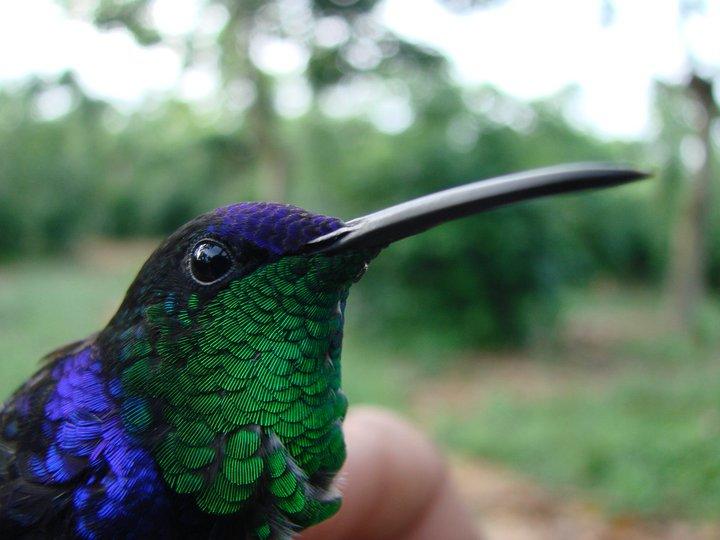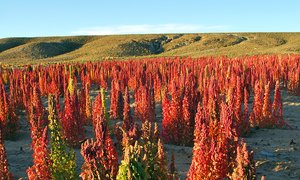You can put a price tag on the value of agricultural biodiversity

For the International Day for Biological Diversity, M. Ann Tutwiler, Director General, Bioversity International, welcomes this week's communiqué from the G7 Environment Ministers’ meeting, and reflects on the value that agricultural biodiversity brings to the sustainable development table.
For the International Day for Biological Diversity, M. Ann Tutwiler, Director General, Bioversity International, welcomes this week's official communiqué from the G7 Environment Ministers’ meeting, Japan, and reflects on the challenges of putting a price tag on the many services that agricultural biodiversity brings to the sustainable development table.
This week, the G7 Environment Ministers issued an official communiqué ahead of the upcoming G7 summit meeting in Japan, when heads of state and government officials will focus on key global challenges and opportunities – the first summit since the agreement of the 2015 Sustainable Development Goals. The communiqué illuminates the pathway to a “low-carbon, climate resilient and sustainable society”.
Bioversity International welcomes the G7 Environment Ministers’ statement that safeguarding and using biodiversity is of critical importance: “Biodiversity and the entirety of ecosystems constitute the natural capital that supplies us with food, raw materials, medicine, shelter, and water, mitigates or prevents natural disasters, regulates the climate, and provides us with opportunities for recreation, among a myriad of ecosystem services.”
The G7 Ministers called for “a strategic approach to adequately reflect the value of ecosystems as well as ensure effectiveness and avoid unintended negative effects.” This is no easy task. Some important work has been done to estimate the value to agriculture of biodiversity. For example pollination by insects, birds and bats is essential for up to 40% of the nutrients we consume. But putting a value on agricultural biodiversity – which means all the biological diversity components of relevance to food and agriculture – is more challenging.
Nevertheless, Bioversity International’s scientists have found a way to identify which biodiversity to conserve, to determine how much diversity we need to conserve, and to create incentives to help conserve agricultural biodiversity. Bioversity International has been working on these challenges in Peru, Ecuador, Bolivia, India and Nepal. Through our Payment for Agrobiodiversity Conservation Services scheme, the costs to conserve threatened quinoa varieties were estimated to be around US$ 150 per hectare in Bolivia but up to US$ 2,400 in Peru where farm areas are much smaller and labour costs higher. These costs were established through a competitive tender scheme working with farming communities in Bolivia and Peru.
 In 2014, the Peruvian Ministry of Environment, in collaboration with the Ministry of Economics and Finance's Euro Eco-Trade Programme, called on Bioversity International's expertise to help develop a plan for a national incentive scheme for agricultural biodiversity conservation.
In 2014, the Peruvian Ministry of Environment, in collaboration with the Ministry of Economics and Finance's Euro Eco-Trade Programme, called on Bioversity International's expertise to help develop a plan for a national incentive scheme for agricultural biodiversity conservation.
The Eco-Trade Programme helps Peruvian farmers add value to and export organic products from selected native crops. But rather than simply exploiting the market potential of native crops, Peru recognized that as a centre of origin for many of these native crops, maintaining the underlying genetic resource base was critical for the future.
The Peruvian Ministry of Environment, in cooperation with Bioversity International, signed a contract in 2015 with six quinoa-producing communities for the conservation and sustainable use of this nutritious crop.
This collaboration has demonstrated that scientific research can help:
- prioritize which crop diversity to conserve from an estimated 5,500 plant species used by humans for food – or, as Noah might have put it: “Which species should we take on board the Ark?”
- set conservation targets to determine how much conservation is needed to secure a range of specific ecosystem services;
- design mechanisms that provide farmers with payments for valuable conservation and ecosystem services to generate sustained demand for threatened genetic resources. Examples of services including maintaining landscapes that are resilient to climate change and emerging pests and diseases, and maintaining underlying evolutionary processes for future options to generate sustained demand for threatened genetic resources.
Bioversity International is also collaborating with UNEP’s 'The Economics of Ecosystems and Biodiversity for Agriculture and Food' initiative to develop valuation methodologies that make these invisible benefits visible – by putting them on the balance sheets of our food systems. Ensuring that farmers receive a fair price for the multiple public services that their management of agricultural biodiversity provide is our best opportunity for securing a sustainable future.
As the communiqué notes: “More specifically, we need a transition to socio-economic systems making conservation more valuable than degradation, and sustainable use more valuable than unsustainable use.”
M. Ann Tutwiler
Follow M. Ann Tutwiler on Twitter:
@anntutwiler
Editorial Notes:
The G7 Ministers and high representatives, and the European Commissioner responsible for the environment, met in Toyama, Japan on May 26-27 2016. This meeting follows 2015 global commitments including the 2030 Agenda for Sustainable Development, the Paris Agreement on Climate Change and the Sendai Framework for Disaster Risk Reduction and the Addis Ababa Action Agenda. The meeting covered seven themes: the 2030 Agenda, Resource Efficiency, Biodiversity, Climate Change, Chemicals Management, the Role of Cities and Marine litter. Read more here.
Photo top: The crowned woodnymph is a species of hummingbird. Hummingbirds are important pollinators in the Americas. Credit: PMA. Photo bottom: Quinoa growing in Bolivia. Credit: Bioversity International/S. Padulosi
